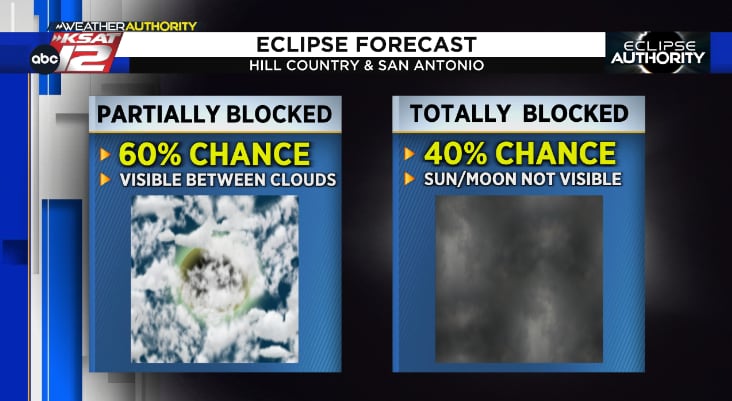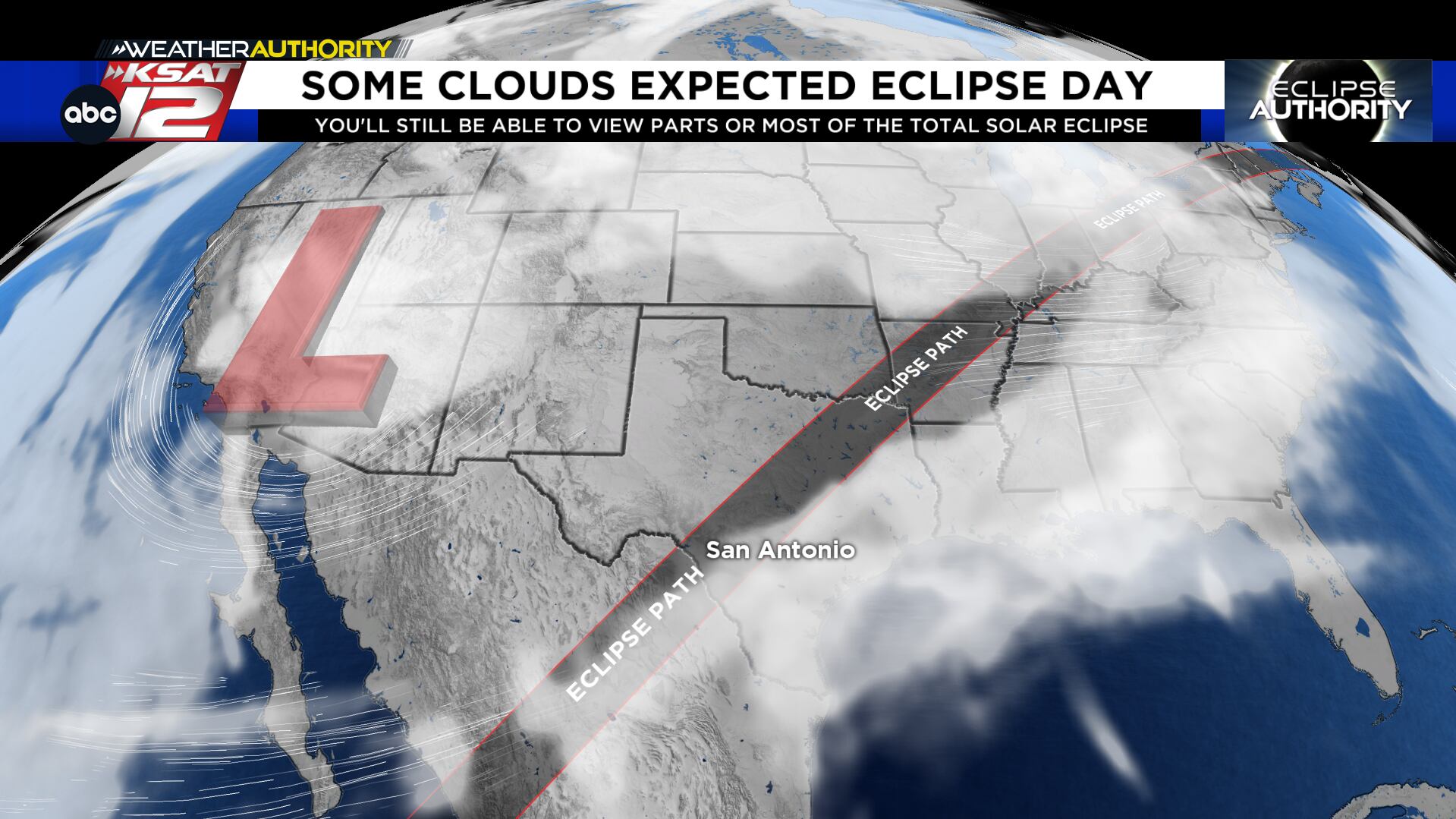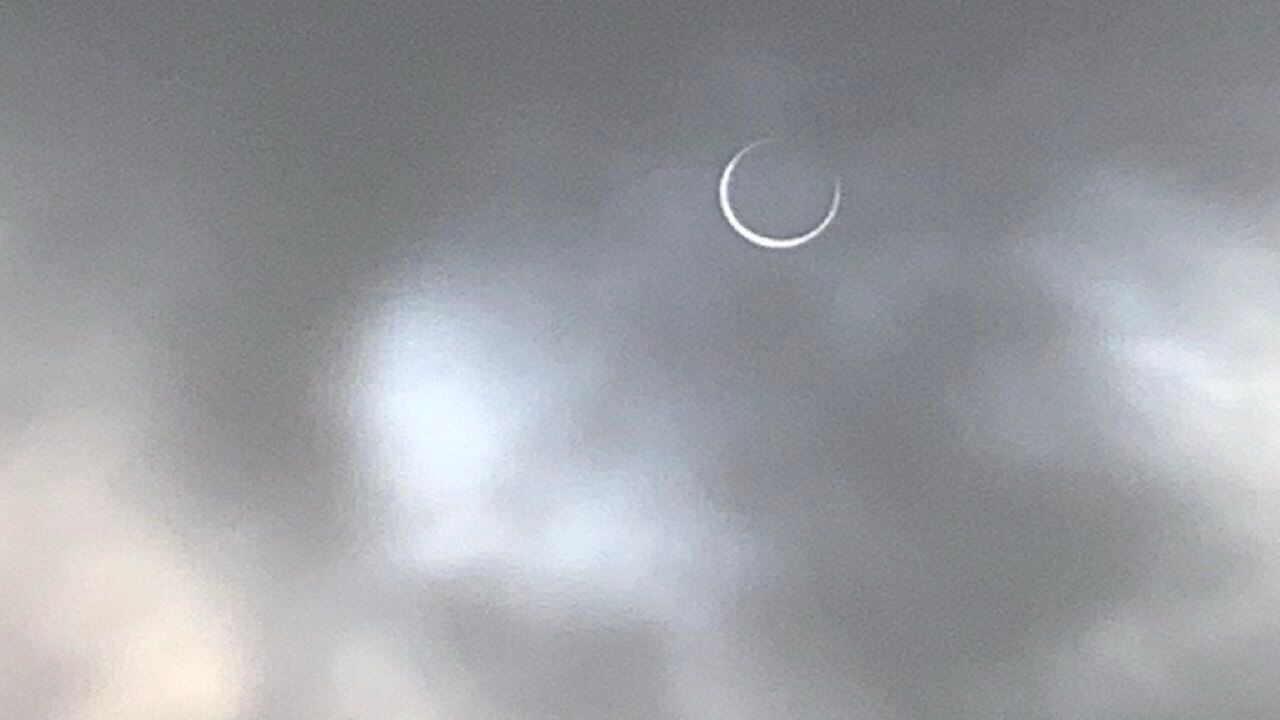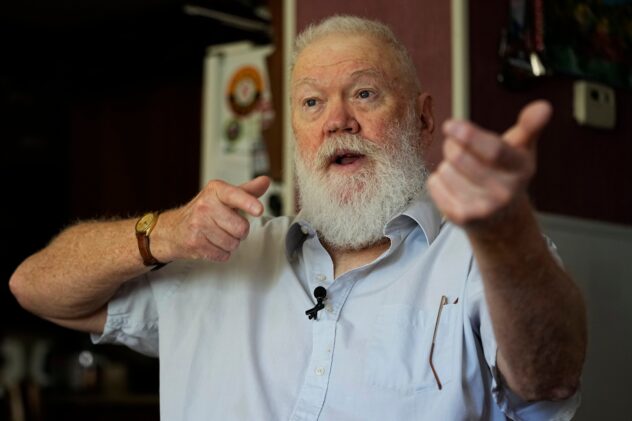
A once-in-a-lifetime event: the path of a total solar eclipse will pass through parts of San Antonio and the Texas Hill Country around 1:30 p.m. on Monday, April 8.
Ideally, skies would be clear and we would have a straightforward eclipse-viewing experience: watching the gradual transition as the moon passes in front of the sun and eventually blocking out the sun completely. Darkness would fall in the path of totality, and the sun’s white corona would be visible.
Unfortunately, forecasts for San Antonio and the Texas Hill Country are trending away from a completely clear view of the eclipse. However, you will still be able to view parts of – and experience – the solar eclipse.

This is what you need to know:
KEY POINTS:
- Clouds – especially high, translucent cirrus clouds – are likely during the April 8 total solar eclipse
- The questions that remain regard the timing and coverage of any low clouds, and if they can break up at all by Monday afternoon
- Your viewing experience will depend greatly on the type of clouds overhead — and that kind of specific forecasting is not possible until a couple of days before Monday, April 8
Here’s a look at some possible scenarios, depending on the types of clouds you may see:
HIGH-LEVEL CLOUDS (CIRRUS CLOUDS)
You will still be able to see some of the transition through high-level clouds. It just depends on how thin or thick that cloud layer will be. If you’re in the path of totality, darkness would still fall dramatically for the duration of totality. You’ll notice a temperature drop, too.

THICK, LOW CLOUDS
If overcast, the entire eclipse transition experience would be hidden. Those outside of the path of totality may not notice much other than the sky getting a little dimmer.
The good news? Those along the path of totality would still experience complete darkness – like the middle of the night. And darkness would fall quicker than any sunset you’ve ever experienced. There would also still be a small temperature drop over the course of the eclipse. Still, a completely overcast sky is worst-case scenario on eclipse day.
A better scenario would be if the morning cloud cover can break up a bit by the early afternoon, we could catch a glimpse of the eclipse through the passing clouds.
What we’ll need to finetune over the next few days as more high-resolution data comes in: where will low clouds be present on Monday? What will the coverage look like? Will we see breaks in the cloud cover? If so, at what point in the day will the clouds start to break up?
More details to come!
Here’s a list of some eclipse articles on KSAT:
- ECLIPSE DAY LIVE: Watch KSAT coverage from San Antonio, Texas Hill Country on April 8 at noon
- INTERACTIVE MAP: April 2024 total solar eclipse path
- Here’s what to expect during the April 8 eclipse if you’re NOT in the path of totality
- April 8 total solar eclipse will be the first over San Antonio since 1397!
- LIST: South Texas events for viewing April’s total eclipse
- Many Hill Country schools will be off April 8 for solar eclipse; most San Antonio schools will not
- You’ll need special glasses to view April’s total solar eclipse
- How to safely take photos of the April 8 solar eclipse with your phone
- Hill Country officials prepare for thousands of visitors ahead of April’s total eclipse
- 🧪 Science with Sarah: Solar Eclipse Pinhole Projector🌞
- Safety pins? Bad health? These are the myths and superstitions surrounding the solar eclipse
- Here’s why you might not want to drive your electric vehicle on April 8
- KSAT Connect: Share your photos, videos of annular eclipse
Read more from the meteorologists on the Whatever the Weather page
Download KSAT’s weather app for customized, accurate forecasts in San Antonio, South Texas or wherever you are
Find the latest forecasts, radar and alerts on the KSAT Weather Authority page













